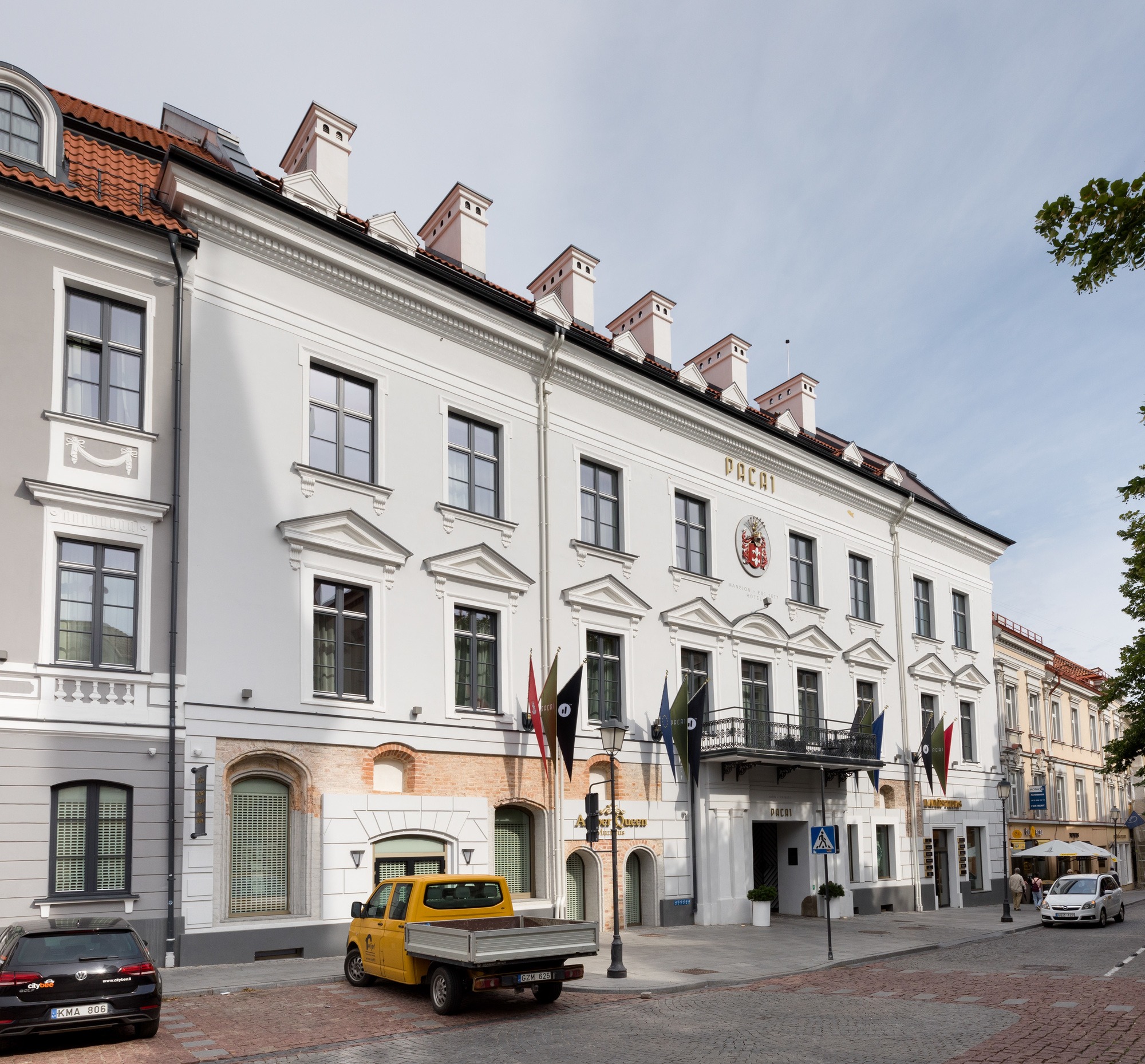
7 Didžioji Street. 2019
Photographer Tomas Kapočius
Lithuanian Art Museum
A three-storey house owned by the noble family of Astikai had been built on the site by the 15-17th century. After the last member of the family, Gregory Astikas, was executed on the Town Hall Square for conspiracy and counterfeiting on June 18, 1580, the house was confiscated. A next-door building had belonged to canon Ambraziejus Beinartas since 1602, who had set up a dormitory there. The buildings were damaged heavily during the 1654–1667 Russo-Polish War. They were bought by Michał Kazimierz Pac, hetman of the Grand Duchy of Lithuania. The buildings were rebuilt and joined together (reconstruction was carried out by architect Jan Zaor; the interiors done by famous Italian masters Giovanni Pietro Perti and Michelangelo Palloni). The resulting Baroque palace became one of the most flamboyant buildings in Vilnius. Some of the most influential figures of the time visited it: the King of Poland and Grand Duke of Lithuania John Sobieski stayed here in 1688, the Tsar of Russia Peter I in 1705, the Russian emperor Alexander I attended balls in the palace in 1812, as did the French Emperor Napoleon at a later point in time. In 1797, the palace was inherited by the last descendent of the Pac family, Ludwik Michał Pac, who took active part in the 1831 uprising and fled to France in its wake. As a result, the palace was nationalised. Several reconstructions bestowed the building with elements of Classical style. It was converted into a military administration building. A number of different enterprises operated here until 2010. After a major overhaul, the Pacai Hotel opened in the palace in 2018.
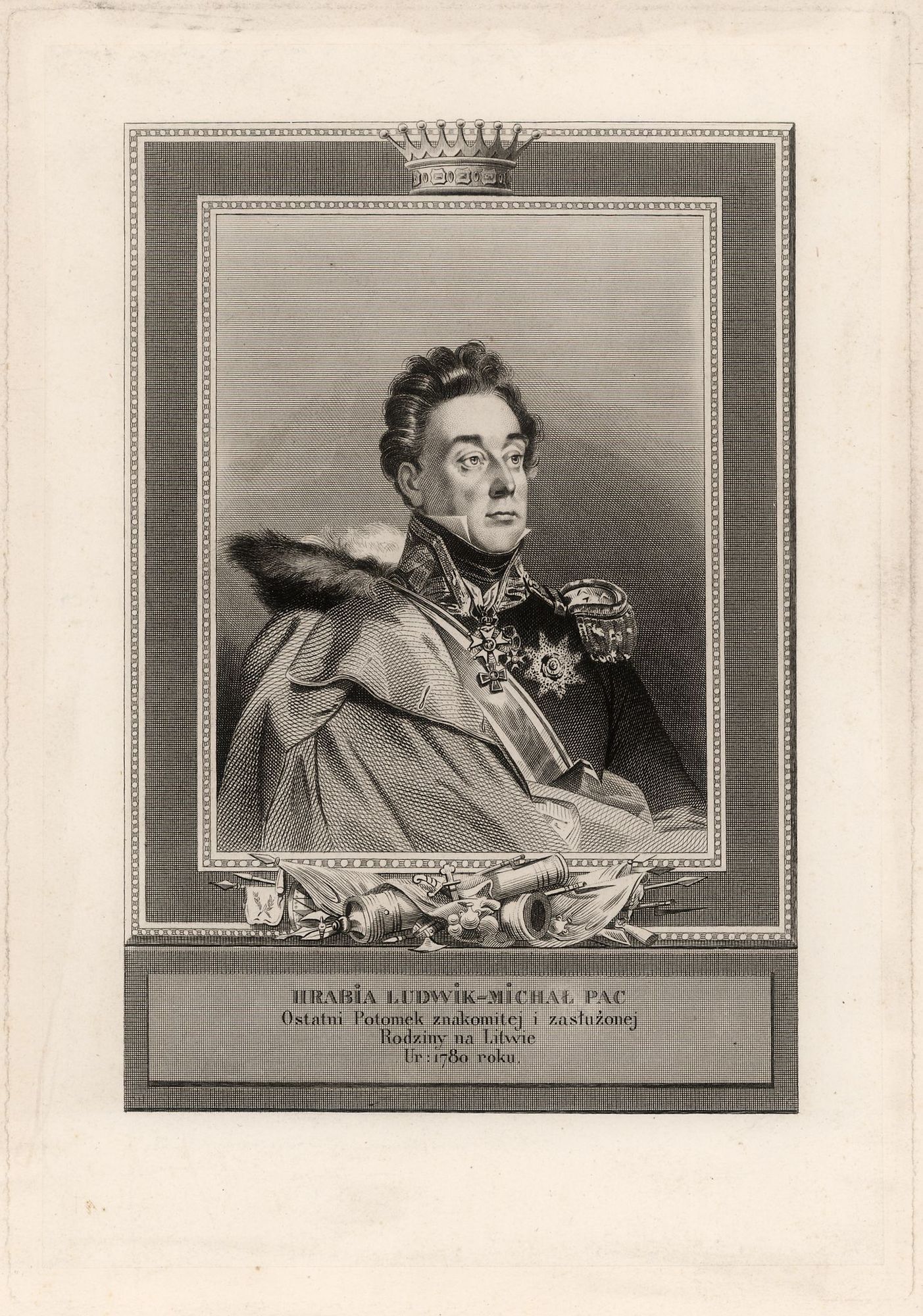
Unknown artist
Ludwik Michał Pac. Mid-19th century
Paper, steel engraving
Lithuanian Art Museum
LUDWIK MICHAŁ PAC (1778–1835)
Military figure, one the last descendants of the noble Pac family. Studied at schools in France and England, continued his studies at Vilnius University. Inherited the palace on Didžioji street (current 7 Didžioji st.) in 1797. Fought for the Napoleon army in Spain (1808) and Austria (1809). Promoted to Napoleon’s aide-de-camp in 1812, later became a general. Took part in the invasion of Russia. Was awarded the Legion of Honour, Virtuti Militari, St Stanisław Order and the Bavarian Military Cross for his merits. Active participant of the 1830–1831 uprising, funder of insurgents, member of their provisional government. Commanded a reservist corps in 1831. Wounded in the Battle of Ostrolenka. Left to France after the failure of the uprising, while his palace on Didžioji Street was confiscated by the Tsarist regime.
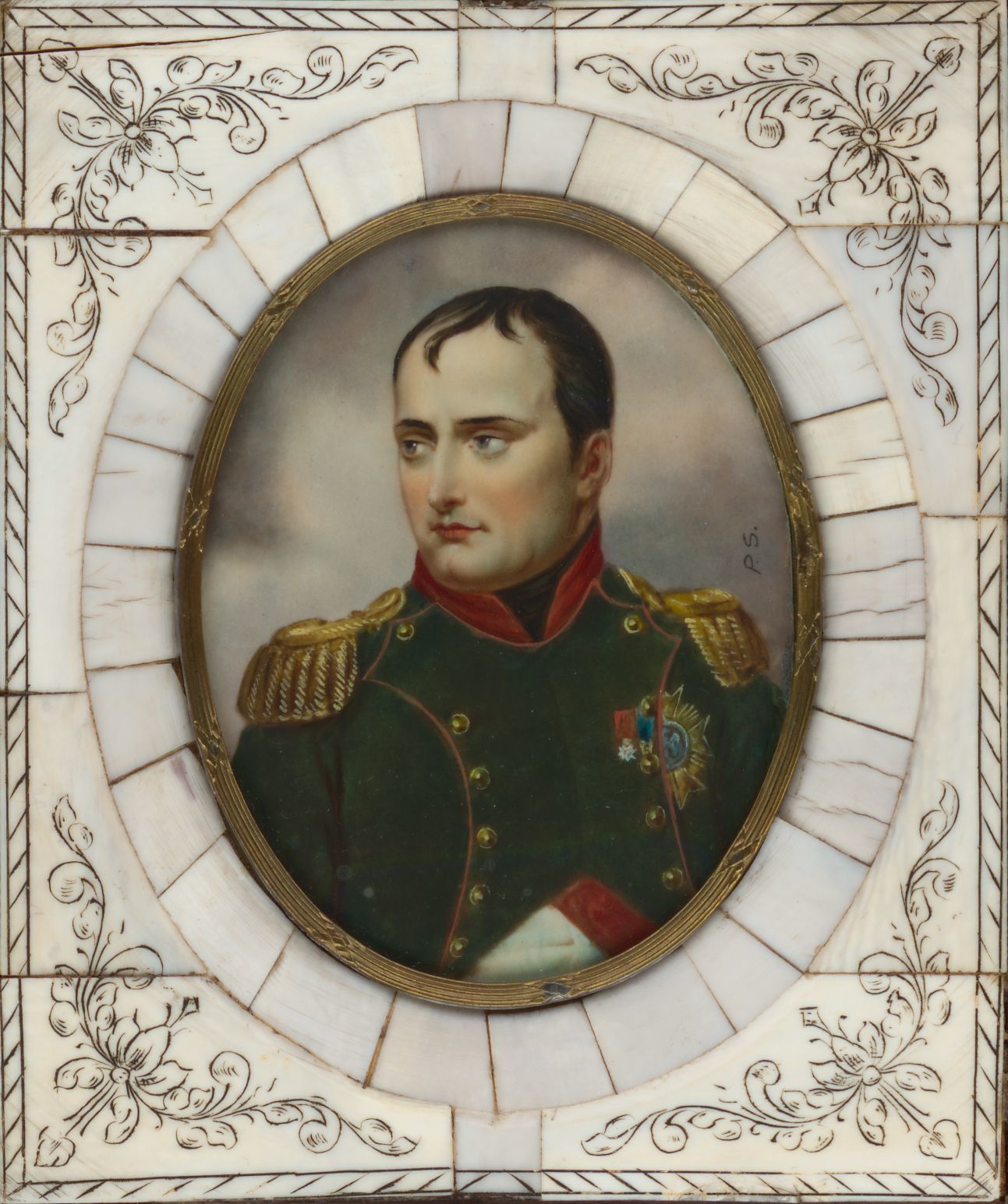
Unknown french artist P. S.
Napoleon Bonaparte. 19th century
Paper, watercolour
Lithuanian Art Museum
NAPOLEON BONAPARTRE (1769–1821)
Emperor of France, general commander of the Revolutionary Army of the French First Republic (1792–1804). Rose to power following the Coup of 18 Brumaire, became First Consul. Proclaimed First Consul for Life in 1802. In 1804, proclaimed the Emperor of France by the Senate. His military victories allowed France to annex vast territories, taking control of nearly all of the continental Europe from Spain to Poland. During his 1812 military campaign against the Russian Empire, he visited the Pac palace on Didžioji street (current 7 Didžioji st.). After the failed invasion of Russia, the French army suffered a fatal blow at the Battle of Leipzig in 1813 and when the Allies captured Paris in 1814, Napoleon was forced to abdicate. He was exiled to the island of Elba. Escaped from Elba in March 1815 and, with the help from his supporters, took control of France again for a brief period. After the defeat at the Battle of Waterloo in June 1815, was forced to abdicate once again and was exiled to the island of Saint Helena, where he died in 1821.
SOPHIE DE CHOISEUL-GOUFFIER (1790–1878)
The first female novelist in Lithuania. Learned drawing under the tutelage of Jan Rustem. Grew up in Vilnius, lived in Kairėnai manor. Often visited the Pac palace (current 7 Didžioji st; her father Ignacy Tyzenhaus owned a part of the premises), where she met the nobility of Vilnius and the city’s prominent visitors. In 1812, she met and became friends with Russian Emperor Alexander I, also met Napoleon Bonapartre. Lived in Rokiškis manor, built by her father, for a while, where she married Antoine Louis Octave de Choiseul-Gouffier, owner of Plateliai manor. Moved to Plateliai manor after her husband’s death. Travelled Europe. Made acquaintances with writers Alexander Dumas, Alfred de Musset and other prominent cultural figures of the 19th century. She is mentioned in Leo Tolstoy’s War and Peace. Published her memoir Reminiscences of Emperor Alexander I and Emperor Napoleon I (1862), wrote about 10 historical novels based on Lithuanian and Polish history. She wrote in French.
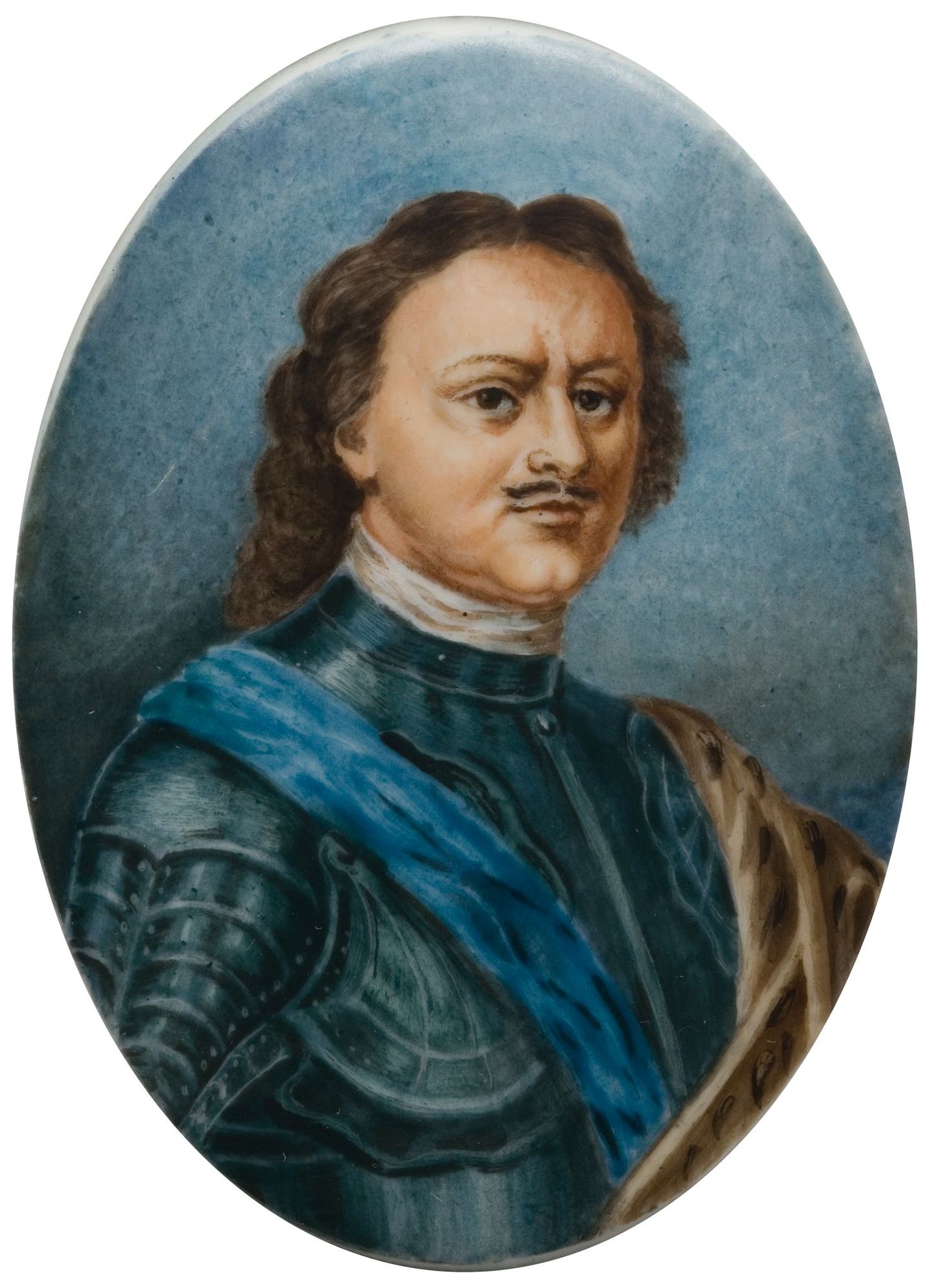
Unknown artist
Peter I. 19th century
Velvet, porcelain, enamel painting
Lithuanian Art Museum
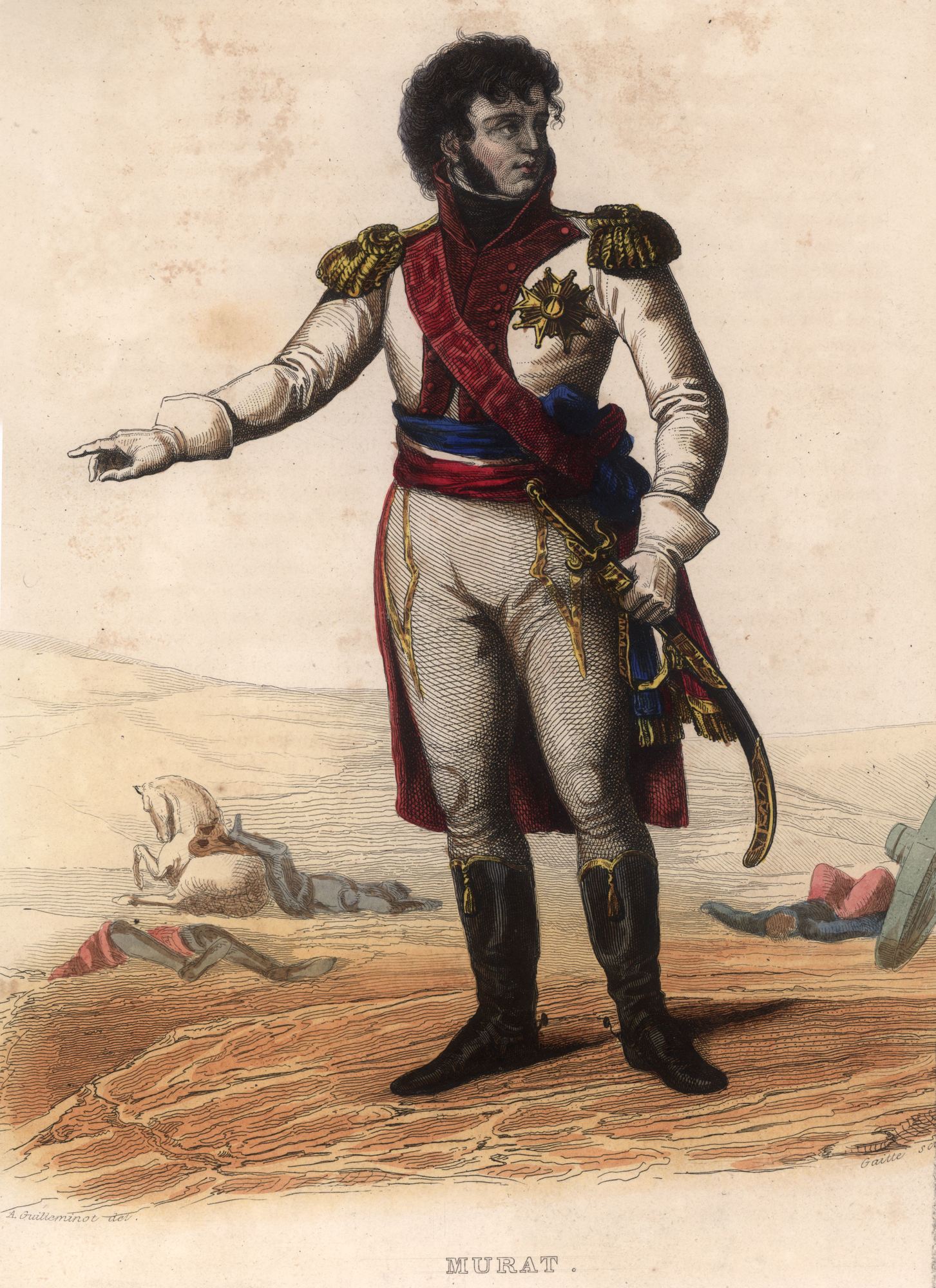
Antoine-Joseph Gaitte (1753–1835) after Armand Charles Guilleminot (1774–1840)
Portrait of Joachim Murat. First half of the 19th century
Paper, coloured steel engraving
Lithuanian Art Museum